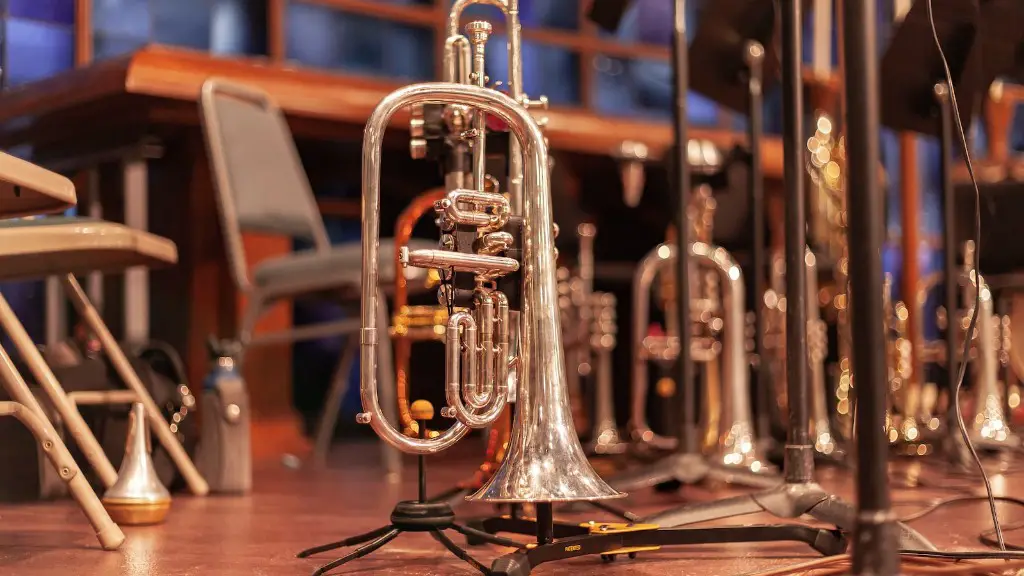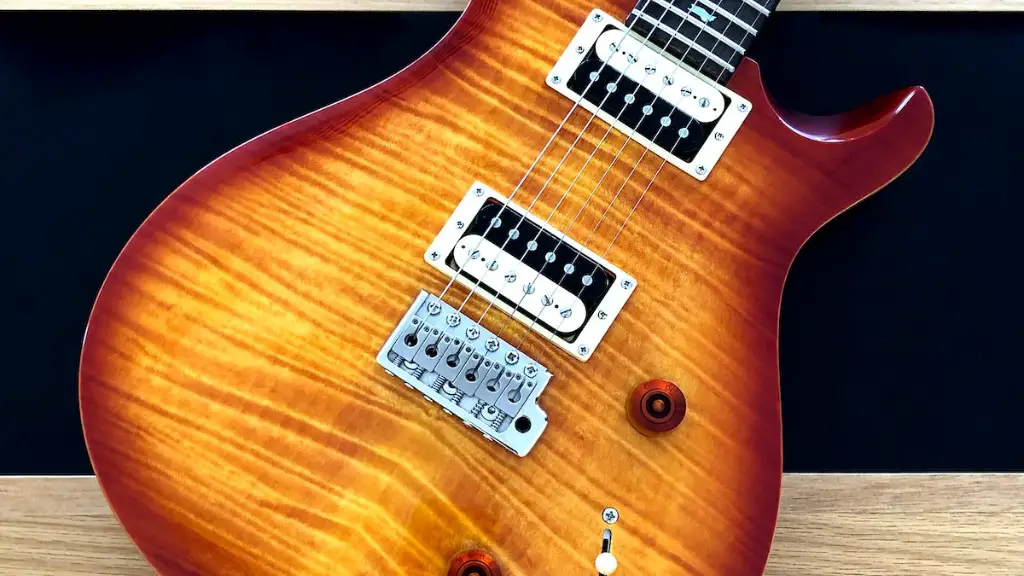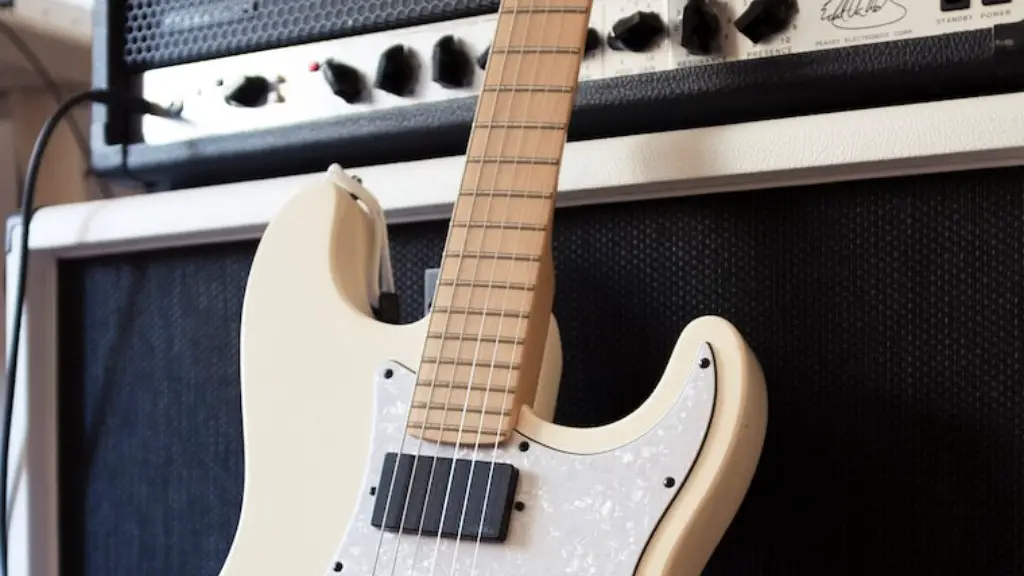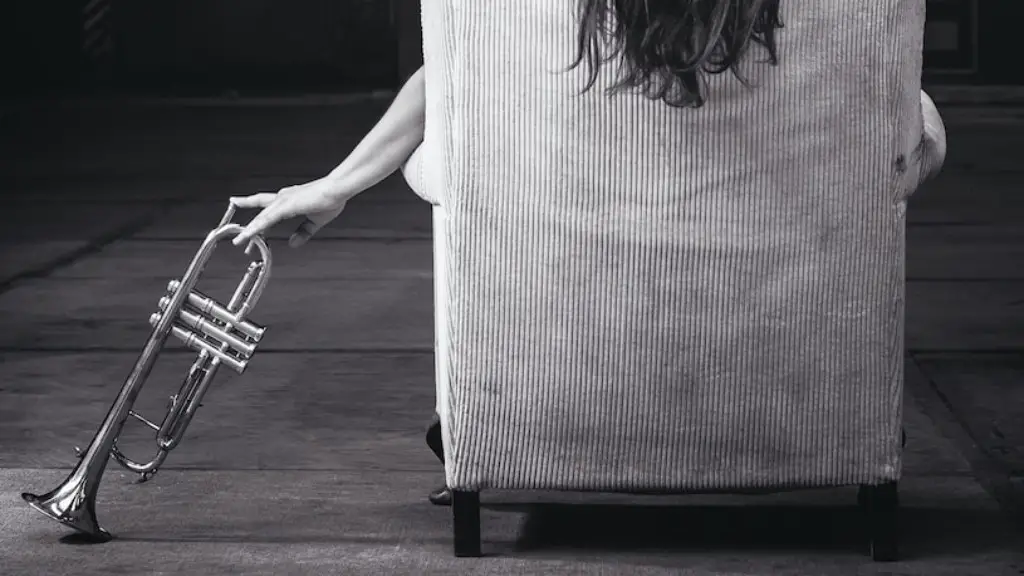Playing the trumpet is a fun and rewarding experience. Before you can start playing, however, you need to learn how to hold and place your mouth on the trumpet. Placing your mouth on the trumpet correctly allows for proper airflow, which in turn creates a better sound.
The first step is to make sure that the trumpet is in the correct position. It should be angled slightly away from your face while you are playing. Make sure that the bell of the trumpet is facing away from you and towards where you want to project your sound.
When placing your lips on the mouthpiece, ensure that they are covering as much of it as possible. Your top lip should be above your bottom lip, creating a seal around the rim of the mouthpiece. At this point, let out a short breath through both lips and make sure that there is no air leaking out.
Once you have created an airtight seal with your lips, you are now ready to begin playing! With practice and dedication, soon you will be able to create beautiful music with your trumpet!
Place your lips together and form a small, round opening with the corners of your mouth. The opening should be between the size of a pencil eraser and the size of a dime. The middle of the opening should line up with the center of the mouthpiece.
Setting the Embouchure
Having the proper embouchure is essential for a successful trumpet performance. To create an effective embouchure, the lips must be in a “V” shape when playing. The corners of the mouth should be slightly pushed out, with the upper lip slightly rolled down over the lower lip. The jaw should also be relaxed, without tension. The chin should also be tucked in slightly, creating a cup-like shape with your mouth.
The mouthpiece should then be placed gently against your lips, just below the centerline of your mouth. It should not rest too heavily against your lips, as this can create tension and prevent a free and natural sound. The center of the mouthpiece should rest between your top and bottom teeth, with just enough space to allow air to flow through freely.
When playing, it is important to maintain proper breath support and focus on keeping the muscles in your face relaxed and free-flowing. This will help keep your sound consistent and allow you to achieve maximum range with ease. With practice and patience, you can develop an effective embouchure that will help you play better and more confidently than ever before!
Placing the Corners of Your Mouth on a Trumpet
Playing the trumpet is an exciting and rewarding experience. The placement of your mouth on the trumpet is key for proper sound production. When playing the trumpet, you should place each corner of your mouth on the edge of the mouthpiece rim. This will ensure that your lips are tight enough to vibrate and produce a sound, but not so tight that it becomes uncomfortable. It’s important to remember that you want to create a seal between the mouthpiece and your lips so that air can’t escape.
Your bottom lip should be slightly lower than your top lip and both should be curved inward slightly, creating a “C” shape. Make sure that you do not press too hard with either lip because this will affect the sound quality. Once you have placed each corner of your mouth on the mouthpiece rim, take a deep breath and blow into the trumpet while keeping your lips in place. You should feel pressure against both corners of your mouth as you do this. If you need to adjust, make small adjustments until it feels comfortable and produces clear tones.
Setting the Lower Lip on a Trumpet
The lower lip plays an important role when playing a trumpet. Proper placement of the lower lip is essential for controlling the sound and allowing for a smooth transition between notes. To place your mouth on a trumpet correctly, start by slightly pushing your lower lip out, but not too far so that it is touching the mouthpiece rim. Press your upper and lower lips together firmly while creating an airtight seal. Be sure to adjust your jaw slightly to ensure that the position is comfortable and that you can move your lips freely while playing. Finally, use your tongue to create buzzes and slurs to help you with intonation.
It’s important to practice setting your lower lip on the trumpet regularly in order to ensure good technique and tone production. By regularly adjusting your mouth position, you’ll be able to stay in control of your sound at all times.
Tensing the Upper Lip
Creating the perfect embouchure on a trumpet is essential for producing a clear, powerful sound. Tensing the upper lip is an important step in forming the correct embouchure. It involves creating tension around the edges of the lips and allowing for a controlled opening in the center. The goal is to create a seal that can be easily adjusted as you play.
To create this tension, start by placing your mouthpiece on your lips and then pressing down lightly with your top lip. You should feel some resistance, but be careful not to press too hard as this can cause discomfort. Next, purse your lips together firmly but not too tightly so that you can still move them freely when you are playing.
Finally, adjust the opening of your mouth by pressing both corners of your upper lip towards each other and then slowly releasing them outwards while keeping them slightly tensed. This will help ensure that there is a proper seal between the mouthpiece and your upper lip. Once you have achieved this position, practice playing long tones to ensure that you are creating an even sound across all ranges of pitches.
With practice and consistency, it’s possible to develop an effective embouchure for playing trumpet or other brass instruments. Tensing the upper lip correctly is an important part of this process and will help ensure that you get a clear, powerful sound every time you play.
Creating an Airtight Seal
Placing your mouth on a trumpet is an important part of playing the instrument. When done correctly, it helps you create a strong airtight seal that will allow you to produce a full and resonant sound. Before playing the trumpet, it is important to make sure your lips are in the correct position.
Begin by pursing your lips together like you are about to give someone a kiss. Make sure your teeth stay apart and do not come into contact with the mouthpiece of the trumpet. Place the mouthpiece between your lips, making sure not to press too hard or too soft against the metal. You should feel a snug fit, but not one that causes any discomfort.
Now take a deep breath and blow gently while opening your lips slightly. This will help create an airtight seal between your mouth and the mouthpiece of the trumpet. Remember to keep in mind that blowing too hard can create an overly sharp sound, while blowing too softly will produce a weak tone.
When done correctly, creating an airtight seal with your mouth on a trumpet can help you produce beautiful sounds when playing this instrument. To ensure optimal performance, practice regularly and make sure to give yourself enough time to establish this key technique before playing for an audience or at other events.
Adjusting the Jaw and Tongue Positioning
Properly positioning your jaw and tongue when playing the trumpet is essential for a successful performance. To place your mouth correctly on the instrument, start by forming an “O” shape with your lips. Next, make sure the corners of your mouth are tight, but not so tight that you cannot move them. Then, make sure to position your tongue just behind your bottom teeth and form an arch with it. Finally, draw the corners of your mouth slightly inward towards each other. This will help create a great embouchure that will make playing the trumpet easier and sound better. Practicing this positioning regularly will ensure that you can play with good technique.
Once you have mastered the proper embouchure for playing the trumpet, practice making small adjustments as needed to improve your sound and intonation. By keeping your jaw slightly relaxed, as well as experimenting with different tongue placements, you can greatly improve both articulation and intonation while playing. As you practice more and become more comfortable with this new setup, you will find that it becomes second nature in no time!
The End
Positioning your mouth correctly on the mouthpiece is a crucial part of playing the trumpet. It may take some time to form the right embouchure, but with practice and patience, you’ll be able to master it in no time. Remember that the lip muscles should be relaxed, and the corners of your mouth should be slightly pursed. Also remember that the angle of your mouthpiece should remain steady while playing.
To conclude, correct placement of your lips on the trumpet’s mouthpiece is key for producing a good sound with the instrument. It requires developing the right embouchure and maintaining a steady angle of attack while playing. With enough practice, you’ll soon become an expert trumpeter!





